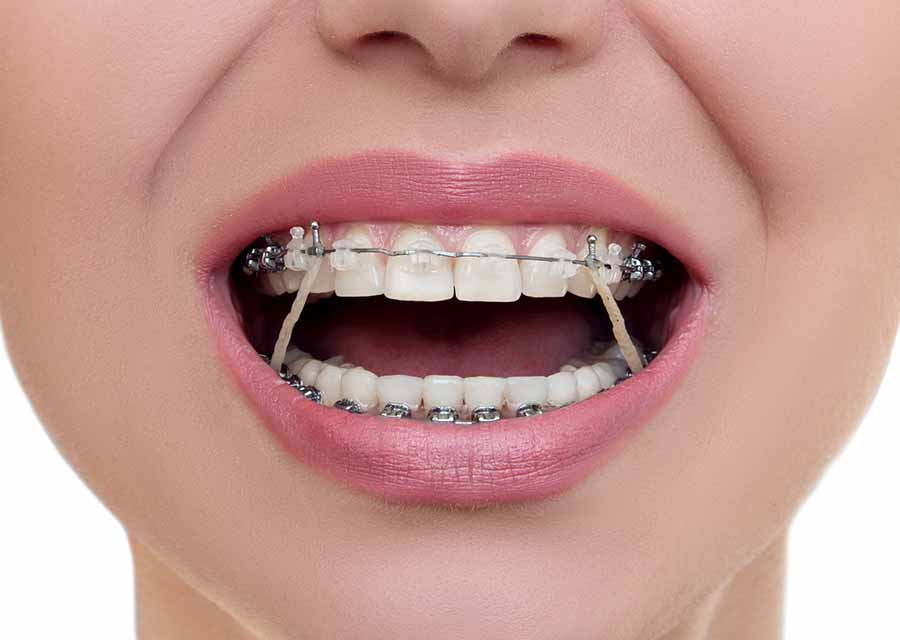Not known Facts About Legacy Orthodontics
Not known Facts About Legacy Orthodontics
Blog Article
The Buzz on Legacy Orthodontics
Table of ContentsThe 6-Minute Rule for Legacy OrthodonticsHow Legacy Orthodontics can Save You Time, Stress, and Money.More About Legacy OrthodonticsRumored Buzz on Legacy OrthodonticsLegacy Orthodontics Fundamentals Explained
At Advanced Orthodontics, we provide individuals with a holistic therapy experience. On top of that, we supply flexible treatment schedules, adaptable payment alternatives and a fun, delightful experience. leesburg clear braces. Telephone call ( 480) 357-4900 today for more details and timetable an appointment.An orthodontist is a dental professional trained to detect, protect against, and treat teeth and jaw abnormalities. They correct existing conditions and are educated to recognize problems that may develop in the future. Orthodontists collaborate with individuals of all ages, from children to grownups. People commonly associate an ideal smile with health.
Malocclusion, or misaligned teeth, can lead to dental concerns, consisting of dental caries, gum tissue condition, and difficult or uncomfortable chewing. Not everybody is born with straight teeth. If you have a poor bite or huge rooms between your teeth, you might intend to consult a dental practitioner specializing in orthodontic care.
7 Simple Techniques For Legacy Orthodontics
( Picture Credit History: DigitalVision/Getty Images) Orthodontists use dealt with and detachable dental devices, like braces, retainers, and bands, to change the setting of teeth in your mouth. Orthodontic therapy is for oral irregularities, including: Misaligned teethBite troubles, like an overbite or an underbiteCrowded teeth or teeth that are too far apartJaw misalignmentThe goal of orthodontic treatment is to improve your bite.
A healthy bite guarantees you can eat, chew, and talk properly. While you may consider orthodontists as mainly for kids or teens that require dental braces, they can remedy dental issues at any type of age. Orthodontists attend university, dental school, and orthodontic college. After college graduation, they spend 2 or 3 years in an orthodontic residency program.
All orthodontists are dental experts, yet not all dentists are orthodontists. Orthodontic residency programs offer intensive, focused guideline for oral specialists. They concentrate on two locations: Exactly how to correctly and securely relocate teeth Exactly how to effectively assist advancement in the teeth, jaw, and faceOnce an orthodontist has finished training, they have the alternative to become board certified.
Top Guidelines Of Legacy Orthodontics
Misalignment, or malocclusion, is one of the most common factor individuals see an orthodontist. It is hereditary and is the outcome of dimension distinctions between the upper and lower jaw or between the jaw and teeth. Malocclusion causes tooth overcrowding, an irregular jaw, or irregular bite patterns. Malocclusion is typically treated with: Your orthodontist connects steel, ceramic, or plastic square bonds to your teeth.
If you have just small malocclusion, you might be able to utilize clear dental braces, called aligners, as opposed to conventional dental braces (https://canvas.instructure.com/eportfolios/3201746/Home/The_Best_Leesburg_Orthodontist_Transforming_Smiles_Changing_Lives). Some individuals require a headgear to help move teeth right into line with stress from outside the mouth. After braces or aligners, you'll need to use a retainer. A retainer is a personalized gadget that maintains your teeth in position.
They can create additional space in the mouth without having to draw teeth. Orthodontists make use of cables, medical screws, or plates to support your jaw bone.
You may require to see an orthodontist if you have: Crowding or not enough space for every one of your teethOverbite, when your upper teeth come over your bottom teethUnderbite, when your bottom teeth are also far forwardSpacing or problems with gapsCrossbite, which is when your upper teeth fit behind your bottom teeth when your mouth is closedOpen bite or a vertical void in between your front base and upper teethMisplaced midline, when the facility of your base and upper teeth do not line up Correcting an oral malocclusion can: Make biting, chewing, and speaking easierImprove the balance of our face and your total appearanceEase discomfort from temporomandibular joint problemsSeparate your teeth and make them much easier to clean, assisting avoid dental cavity or tooth cavities It's often a dental practitioner that first notifications misaligned teeth throughout a regular examination.
Indicators on Legacy Orthodontics You Should Know

Throughout your initial orthodontic examination, you'll likely have: An oral examPhotos taken of your face and smileDental X-raysPanoramic (360 level) X-rays this contact form of your face and headImpressions to produce mold and mildews of your teethThese tests will certainly help your orthodontist know how to wage your therapy. clear braces. An orthodontist is a dental practitioner who's had training to treat your teeth and jaw
Orthodontists may do surgical treatment, exams,X-rays,and even more to assist you attain a much more comfortable, healthier smile. An orthodontist is concentrated on your bite, so something like a broken tooth would be managed by a dental professional. Orthodontists are dental professionals however not all dentists are orthodontists. Orthodontists are concentrated on your bite, or the means your teeth fit with each other, and the straightness of your teeth.
Ever wondered exactly how celebrities constantly seem to have flawlessly straightened teeth? The answer frequently depends on the competent hands of an orthodontist. What specifically does an orthodontist do? Orthodontists are oral experts that concentrate on dealing with irregularities in the teeth and jaws. Their know-how goes past just producing an attractive smile; it includes enhancing your total dental health and function.
Our Legacy Orthodontics PDFs

, orthodontists have a varied toolkit at their disposal. These reliable dental braces use a system of brackets bound to the teeth and linked by cables.
Clear aligners, like Invisalign, are a preferred option for patients looking for a much more very discreet therapy choice. These detachable trays are custom-made to considerably move the teeth's setting. Headgear might be made use of combined with dental braces or aligners to use extra targeted forces, especially for remedying jaw disparities. In cases of slim jaws, palatal expanders can be made use of to produce room for appropriate tooth positioning.
Report this page